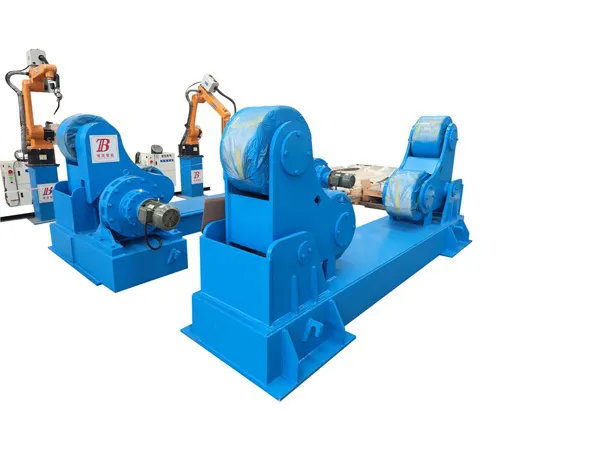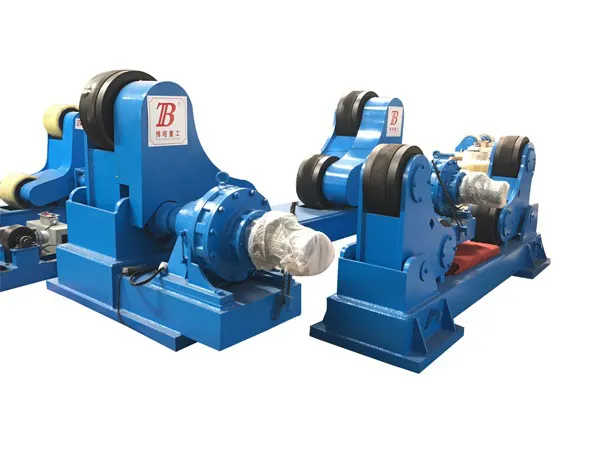Welding rotators are essential tools in the fabrication of pressure vessels, tanks, pipes, and other cylindrical workpieces. They are designed to rotate heavy components during the welding process, ensuring smooth operation, uniform weld seams, and higher efficiency. While there are different types of welding rotators, the two most commonly compared are self-aligning welding rotators and conventional welding rotators.
The main difference lies in their wheel adjustment mechanism and adaptability to different workpiece diameters:

Mechanism: Self-aligning rotators are designed with a unique mechanism where the rollers automatically adjust to the diameter of the workpiece. This is typically achieved through a system of pivoted arms or a walking beam design that allows the rollers to move closer together or further apart as needed.
Key Features:
Automatic Diameter Adjustment: This is the most significant feature. Once the workpiece is loaded, the rollers adjust themselves to securely cradle it.
Versatility: They can handle a wide range of workpiece diameters without manual adjustment of the roller spacing.
Ease of Use: Reduces setup time and operator effort, especially when frequently changing workpieces of different sizes.
Even Weight Distribution: The self-aligning mechanism often ensures a more even distribution of the workpiece weight across the rollers.
Higher Initial Cost: Generally more expensive due to the more complex mechanical design.
Best Suited For:
Workshops handling various diameters of cylindrical workpieces (e.g., pipes, tanks, pressure vessels).
Production lines where frequent changes in workpiece size are common.
Applications requiring quick setup and minimal manual intervention.
Automated welding processes where consistent rotation is crucial.

Mechanism: Conventional rotators require manual adjustment of the roller spacing to accommodate different workpiece diameters. This typically involves moving the roller carriages along a frame and securing them in place.
Key Features:
Manual Adjustment: Operators must physically reposition the rollers for each change in workpiece diameter.
Simpler Design: Mechanically less complex than self-aligning types.
Lower Initial Cost: Generally more affordable, making them a popular choice for budget-conscious operations.
Robust and Reliable: Their simpler design often translates to fewer moving parts and high durability.
Fixed Capacity: Each set of conventional rollers often has a more defined range of diameters it can handle optimally, though the carriages themselves are adjustable.
Longer Setup Time: Adjusting the rollers can be time-consuming, especially for large workpieces or frequent changes.
Best Suited For:
Workshops handling a consistent size of cylindrical workpieces.
Projects with long production runs of the same diameter.
Operations where budget is a primary concern.
Smaller fabrication shops or custom work where diameter changes are less frequent.
The above is all about the difference between self-aligning and conventional welding rotator.In short, self-aligning rotators provide automatic adaptability and efficiency, while conventional rotators offer reliability at a lower initial cost but with more manual setup.Please contact us for details.
No. 1 Intersection of Chuangye Avenue and Weilai Avenue,
Yiyang County,Luoyang City, Henan Province, China
+86 400-0379-069
Copyright © 2023 An Automated Welding and Cutting Equipment Manufacturer Focusing on Welding Column Boom and Welding Rotator | All Rights Reserved Technical support: ShangXian